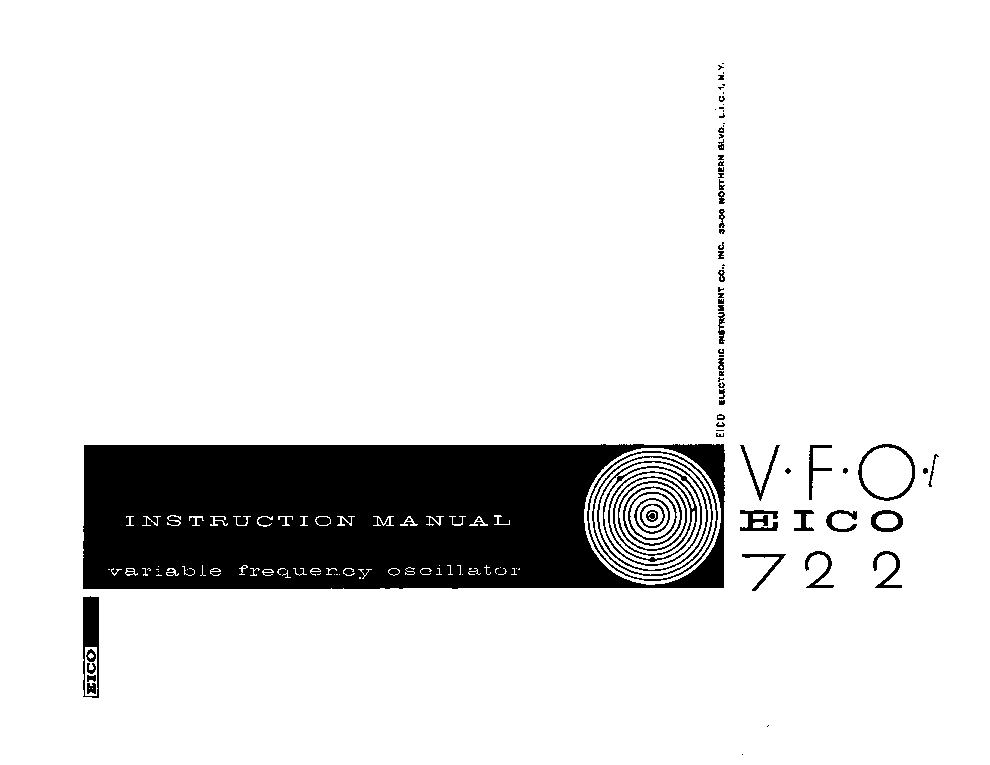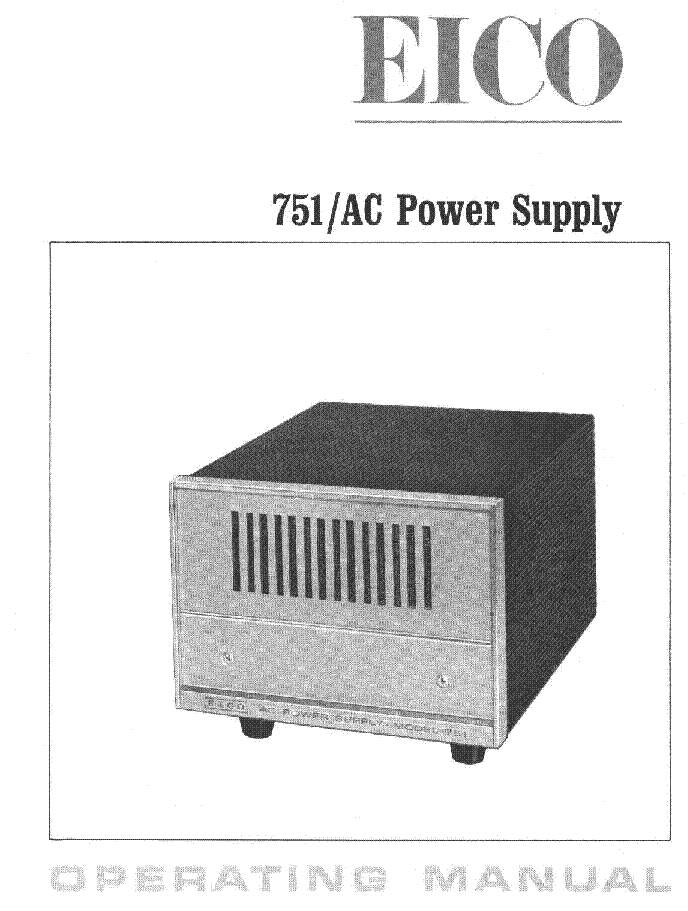EICO 720.

151.4 KB
11
METER
SERVICE MANUAL
Good luck to the repair!
Please do not offer the downloaded file for sell only use it for personal usage!
Looking for similar eico manual?

No preview item for this file.
Possible causes:
- No preview picture generated yet.
- It is not a pdf file.

Download processing...
- Also known:
EICO 720. 720
- If you have any question about repairing write your question to the Message board. For this no need registration.
- If the site has helped you and you also want to help others, please Upload a manual, circuit diagram or eeprom that is not yet available on the site.
Have a nice Day! - See related repair forum topics below. May be help you to repair.
If you are not familiar with electronics, do not attempt to repair!
You could suffer a fatal electrical shock! Instead, contact your nearest service center!
so you need WinZip or WinRar to open that files. Also some files are djvu so you need djvu viewer to open them.
These free programs can be found on this page: needed progs
If you use opera you have to disable opera turbo function to download file!
If you cannot download this file, try it with CHROME or FIREFOX browser.
Szeretnék érdeklődni hogy van e valamilyen olcsóbb lehetőség 1 Lithium ion akkumulátor cella belső ellenállásának mérésére
Hogyan mérik ? egy kHz-es frekiket írtak több helyen ezek mérésénél
esetleg ESR mérővel ? az tud nagyon kis értékű ellenállásokat kondenzátorokat is mérni
Speciális tudásanyagra lenne szükségem!
https://elektrotanya.com/goerz_unigor_6e_full_sch.pdf/download.html
Ezt az anyagot én tettem fel. Ez helyesen tartalmazza az alkatrész pozíciókat és az értékeket is.
Szeretném megérteni a mérőerősítőjének a működését.
Valami különleges, kapcsolt fokozat.
Hiába túrom a netet, nem találok semmit ennek a működéséről.
A hiba jelenség az, hogy váltó feszültséget és áramot tökéletesen mér. Ellenben bármit, ami egyen, azt nem.
Már ott kezdődik, hogy ha +ba kapcsolom a tolókapcsolót, akkor össze-vissza lengedezik a mutató, majd beáll, de nem 0-ra, hanem kitér mínuszba és időnként remeg is. Ha mínuszba, akkor meg egy bizonyos pozícióban kileng plusz irányban és ott áll Bármelyik méréshatárban.
Ellenállás/kapacitás mérésnél nem lehet végtelen/0 poziba állítani, szinte semmit nem mozdul a mutató a poti állításakor.
Ha DC feszültséget mérek vele, akkor +-ban kevesebbet, mínuszban többet mutat.
Az oszcillátor (205Hz) tökéletesen működik. Szkóppal ellenőriztem.
Amit látok, hogy AC mérésnél nem használja az oszcillátort a mérőerősítő ki/bemenetének kapcsolgatására. Ellenben más úton kerül a mérőerösítő jele az alapműszerre. Azt hiszem ott történik az egyenirányítása. Mivel nem értem ezt a kapcsolt fokozatot, nem látom át, hogy a DC mérésekor hol történik az egyenirányítás, már ha van egyáltalán...
A kontakt hibák kijavításán túl vagyok. A tantál kondenzátorokat (3x100UF, 2x47uF és 1x 100uF) kicseréltem (elég magas volt a szivárgási áramuk).
Ez a hiba előtte is megvolt, és ezek után is megmaradt.
Szeretném, ha valaki elmagyarázná, hogyan működik ez a rendszer. Különben hiába mérek akármit, nem fogom tudni értelmezni.
Azt sem látom át, hogy egyes potméterek milyen szerepet töltenek be a mérőműben.
Köszönöm!
Gábor
Hi everyone,
I recently picked up a DS18B20 temperature measurement module to log temperatures in a small Arduino project. The idea is to measure ambient temperature in different rooms and eventually expand it to multiple sensors on the same 1-Wire bus.
Setup Details:
-
Arduino Uno
-
DS18B20 module (3-pin version with onboard pull-up resistor)
-
Connected to 5V, GND, and digital pin 2 for data
-
Using the OneWire and DallasTemperature libraries
-
Simple sketch to read temperature every second and print to Serial
Now here are my issues:
-
The sensor sometimes returns -127°C or 85°C, which I know are error codes
-
Readings fluctuate by 1–2°C even in a stable room environment
-
When I connect a second DS18B20 module, only one of them reports consistently, the other drops out randomly
-
Occasionally, the Arduino freezes when reading multiple sensors
What I’ve tried so far:
-
Verified wiring and ensured common ground
-
Added a 4.7k pull-up resistor externally, even though the module claims to have one onboard
-
Tried both 5V and 3.3V supply
-
Adjusted delay between conversions (750ms vs 1000ms)
-
Tested with both parasitic power and normal VDD mode
My questions:
-
Is it normal for DS18B20 modules to need an external pull-up resistor even if one is included on the board?
-
How do you usually stabilize the readings so they don’t jump around by a degree or two?
-
For multiple sensors on one bus, is there a best practice for wiring length and layout to avoid dropouts?
-
Is there a recommended sampling rate for stable results (every second vs every few seconds)?
Thanks in advance for any advice, hoping to make this stable before I scale up to more sensors.
or write your question to the Message board without registration.
You can write in English language into the forum (not only in Hungarian)!





